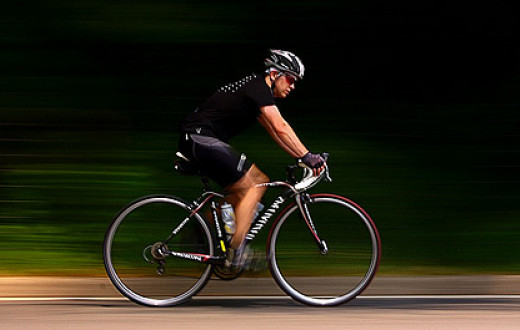Food not only nourishes the body but affects the mind and its alertness and awareness. Thus it is important for you to understand your food, your body, and your mind.
Our body is like an instrument which needs daily tuning. A perfect instrument is key for perfect music. Likewise, for good quality meditation, a light and healthy body is essential. Over a period of time, the bad food habits, lack of knowledge of what’s good for our system, lack of rest and sound sleep, as well as years of abuse of body and mind, can cause diseases in the body.
There are days when you sit to meditate but you feel sleepy or get bombarded with a zillion thoughts? The reason could be your food. A simple understanding of food can change the way you meditate, and change your life.
Our mental attitude greatly depends on the food we eat
Ayurveda, the ancient knowledge of life, divides human body type and its doshas or imbalances into three broad categories - vata, pitta, and kapha. We also have gunas (mental constitution) which are referred to as tamas, rajas, and sattva. A combination of these doshas and gunas define our personality type, temperament, body structure, and diet choices.
The basic nature of the mind is to be calm, happy, and creative or sattvic, along with this, the right amount of rajas and tamas helps us fulfill our daily desires and activities. According to Ayurveda, there is a connection between how we eat, act, our health and mental makeup. We have a choice to respond and not react to circumstances through a good balance of sattva, rajas, and tamas in our mind.
Characteristics of sattvic, tamasic and rajasic individuals
- Sattvic qualities imply calm, enthusiasm, purity, creativity, and clarity of perception. They are careful with their diet and eat only what is suitable for their body type like freshly cooked green vegetables, grains, fruits, and juices are part of his main diet. This keeps them healthy, light, and energetic throughout the day.
- Tamas is inertia and heaviness. Tamasic individuals are lazy, sleep excessively, and get easily irritable and can laze all day, be lethargic, and not work. However, are very active at feeding time and can eat all kinds of meat and heavy food.
- Rajas leads to focus on action, restlessness, many thoughts. Rajasic individuals are egoistic, ambitious, aggressive but get quickly drained of mental energy and like hot and spicy foods, and sweets.
Characteristics of each prakriti (body type):
Vata predominant:
- Impulsive yet creative
- Quick learner and can grasp new knowledge but tends to forget easily
- Full of ideas and thoughts
- Slender, tall and a fast-walker
- Hand and feet tend to become cold, discomfort in cold climates
- Lively and fun
- Changing moods and irregular daily routine
- Quick and short, high energy bursts
- Prone to worry, fear, and anxiety when there is imbalance
- Dry skin and hair with minimum or no perspiration
Pitta predominant:
- Medium physique, strong and well-built with a sharp mind
- Good concentration power
- Orderly, focused, assertive, self-confident, and good public speaker
- Have excellent management, leadership, and entrepreneurial abilities
- Aggressive, prone to temper tantrums, impatient and angry, authoritarian, demanding and pushy when pitta is out of balance
- Competitive, passionate, and romantic
- Strong digestive system and appetite, irritated if you miss or wait for a meal
- Prone to irritation and anger
- Typical physical problems include rashes or inflammations of the skin, acne, boils, skin cancer, ulcers, heartburn, acid stomach, and insomnia, dry or burning eyes
Kapha predominant:
- Stable, reliable, faithful, easygoing, relaxed, slow-paced affectionate and loving with a forgiving, compassionate, and non-judgmental nature
- Physically strong with a sturdy, heavy, and energetic constitution
- Reflective and slow in speech, with a deliberate thought process
- Takes time to learn, but retains it the longest
- Soft hair and skin with large "soft" eyes and a low, soft voice. Tend to become overweight and may have sluggish digestion.
- Prone to depression but self-sufficient, gentle, and have an essentially undemanding approach to life
- Excellent health and a good immune system
- Not easily perturbed, and remains calm even during emergency
- Strives to maintain harmony and peace in their surroundings
- Point of stability for others
- Possessive
- Does not like cold, damp weather
- Physically prone to colds and congestion, sinus headaches, respiratory problems including asthma, allergies, and atherosclerosis (hardening of the arteries)
Let Ayurveda help you choose your diet
A simple change in your food habit conforming to your prakriti helps you to have a healthy and balanced life, and also experience a deeper meditation. The three qualities - tamas, rajas, and sattva - are necessary to maintain our psychological balance. An ideal diet is a sattvic one, conforming to one’s nature or prakriti.
Higher the sattva, deeper is your meditation. Choose your food wisely and clear the way for a blissful meditative experience. A healthy body and a calm mind help us meditate better and go deep within ourselves. A vegetarian diet is easier on the body and conducive to meditation as well.
Your habits | Personality type | To eat | To avoid |
| You maybe Vata | Fruits - banana, orange, and peach Vegetables - asparagus, fresh peas, and okra (cooked with mild spices and olive oil) grãos - oatmeal or whole grain rice and flour thoroughly cooked - small amounts of milk, cheese fresh yogurt, buttermilk, and butter | Fruits -- Dried fruits that are not soaked, raw apples and melons, and raw salads, because they increase dryness and cause constipation and indigestion vegetables- broccoli, cauliflower, and cabbage, as they cause gas Pulses - beans are hard to digest; chickpeas and red beans to be avoided Sweeteners- white sugar Spices - red and green pepper |
Your habits | Personality type | To eat | To avoid |
| You maybe Pitta | Fruits - grapes, coconut, and avocado Vegetables - Asparagus, cauliflower, and cabbage Beans - flour, rice, and barley Dairy products - fresh milk, butter, and buttermilk | Fruits- sour fruits Grains- white flour (pizza and white bread) Sweeteners - white sugar Seasonings - pickles, spices, spicy or bitter salads, sauces, vinegar, and green and red pepper |
| Your habits | Personality type | To eat | To avoid |
| You maybe Kapha | Fruits - lemon, apple, and pomegranate Vegetables - pumpkin, beets, and green leafy vegetables Grains- corn and millet Dairy- goat's milk and unsalted buttermilk Spices- all spices are good, and ginger is the best | Grains- white flour (bread, pizza, and pastries) Dairy products- yogurt Sweeteners- white sugar |
5 quick tips to make your meditation deeper
- Switch to vegetarianism: It is healthy and also makes meditation easier
- Eat more fresh fruits and green vegetables: Include high fiber foods in your diet
- Drink plenty of water: It is good to consume at least two liters of water every day. Prefer fruit juices to carbonated beverages
- Eat the right amount: It is not a good idea to eat too much because a full stomach makes meditation difficult
- Have a sattvic diet: Higher sattva helps to have a deeper experience of meditation
Note: To learn about your Prakriti (ayurvedic body constitution) and receive personal guidance on best food for deeper meditation, consult a doctor from Sri Sri Ayurveda and get your Nadi Pariksha (an ancient method of pulse diagnosis) done. Eat well, live well, and meditate well.
To have a better knowledge of your Ayurvedic body type, you can go to a doctor at one of our Ayurveda Therapy Centres spread across the globe.
Inspired by the wisdom talks of Gurudev Sri Sri Ravi Shankar.
Practicing meditation regularly alleviates you from stress-related problems, deeply relaxes the mind and rejuvenates the system. The Art of Living’s Sahaj Samadhi Meditation is a specially crafted program to help you tap into your unlimited potential by diving deep within yourself.
Find a Sahaj Samadhi Meditation program at an Art of Living center near you.






























